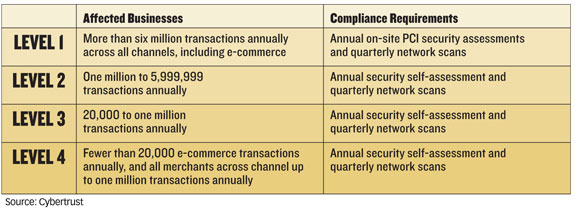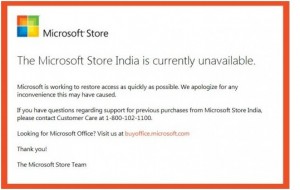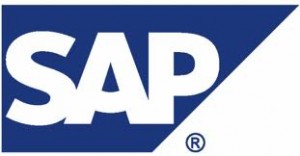The Final Frontier: The Challenges in Developing Secure Custom ABAP Programs
In November, SAP released an unusually high number of Security Notes to patch various forms of injection vulnerabilities in it’s software. The trend continued in December with the release of several patches for code injection flaws in the Computer Center Management System (BC-CCM), Project System (PS-IS), Transport Organizer (BC-CTS-ORG) and work processes in Application Servers responsible for executing ABAP programs (BC-CST). Given this alarming trend, this article is focused on discussing the challenges of developing secure ABAP programs for SAP systems, free of common vulnerabilities including not only injection flaws, but cross-site scripting errors, buffer overflows, directory traversals and backdoors and rootkits.
There are three attack surfaces in SAP systems. The first is through improperly defined and controlled application-level access. This attack surface is the most commonly known and understood by SAP customers. Today, most SAP clients deploy any one of a variety of access management tools to control access to sensitive functions and maintain a strict segregation of duties in their ERP systems. This manages the risk of unauthorized access through inadequate authorization structures that grant excessive or conflicting privileges to users and administrators.
The second attack surface lies at the platform level. This generally refers to components of the NetWeaver Application Server, also referred to as the Basis area of SAP systems. The NetWeaver AS is the technical foundation of the entire SAP software stack. It provides the runtime environment for SAP applications and includes work processes for ABAP and Java programs, gateways and modules for managing RFC, Web-based and other forms of communication protocols, tools to manage user roles, profiles and authorizations, and utilities that control certain database and operating system functions. The secure configuration and management of the NetWeaver AS is a vital component of a comprehensive SAP security strategy. However, the results of our security assessments repeatedly reveal common vulnerabilities in basis settings in most SAP environments. This provides a lush attack surface to internal and external attackers looking for an avenue to manipulate or appropriate business data or deliberately disrupt the availability of SAP systems.
The third and final attack surface in SAP provides an even greater array of opportunities for attackers. This surface exists at the program level. ERP systems such as SAP are designed to perform thousands of distinct functions ranging from, for example, adding a vendor to a list of approved suppliers, performing a transport to implement a change in a specific system, or encrypting/ decrypting traffic between servers or clients. These functions are performed by programs stored in the database table known as REPOSRC that are called when requested by work processes in the NetWeaver AS.
SAP programs are developed using two distinct programming languages: Advanced Business Application Programming (ABAP) and Java. Both are vulnerable to coding errors that could expose SAP programs to exploits such as code, OS and SQL injection, cross-site scripting, cross-site request forgery, buffer overflow, directory traversal and denial of service. SAP programs are also susceptible to missing or broken authority-checks that could lead to unauthorized execution of programs. Finally, SAP programs can contain backdoors through hardcoded credentials that bypass regular authentication and authorization controls, as well as malware known as rootkits that provide attackers with remote, privileged access to system functions and resources.
SAP performs a rigorous code review for all standard or delivered programs prior to release. However, some of the vulnerabilities present in the code base are not detected and patched until after release. Security Notes are therefore an important mechanism used by SAP to patch vulnerabilities arising from programming errors.
Custom programs are rarely subject to the same level of scrutiny applied by SAP to standard programs. Programs developed by in-house or off-shore developers to meet the needs of customers not met by standard SAP functionality are often laden with vulnerabilities that, when exploited, undermine the integrity of entire SAP landscapes. Such landscapes are only as strong as their weakest point. A robust application layer fortified with GRC tools has led attackers to shift their focus to the platform and code level. Given the relative openness of most SAP systems at the technical level, the strategy is proving to be profitable.
SAP has responded by issuing a series of recommendations to customers to strengthen configuration settings in components of the NetWeaver AS. These can be found in the whitepaper Secure Configuration of the SAP NetWeaver Application Server Using ABAP.
However, understandably SAP is less vocal on development procedures for custom programs since this is generally the responsibility of each SAP customer. The challenge should not be underestimated. Although manual code reviews to detect common vulnerabilities are theoretically possible, the skill-set to effectively review custom code is not only rare but expensive. Furthermore, it often leads to an increase in development time. Customers should consider investing in code scanning tools that are tuned to detect suspicious statements in ABAP code and integrate directly into the SAP Transport Management System (TMS). Such tools should also be capable of auto-correcting ABAP statements to minimize resource requirements and the impact on existing development times. Presently, the only tool capable of detecting and auto-correcting vulnerabilities in custom ABAP programs, with direct integration with SAP TMS, is Virtual Forge CodeProfiler. To arrange a security scan of custom programs in your SAP environment using CodeProfiler, please contact a representative at Layer Seven Security.




